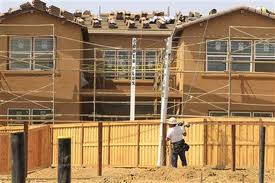 (Washington Post) -- Take, for instance, the big news last week. According to a government report, housing starts rose 2.6 percent in April. Or maybe they fell 12.2 percent. Or maybe they rose by a much more dramatic 17.4 percent. It’s hard to say, because the reported number came with a margin of error of plus or minus 14.8 percent.
(Washington Post) -- Take, for instance, the big news last week. According to a government report, housing starts rose 2.6 percent in April. Or maybe they fell 12.2 percent. Or maybe they rose by a much more dramatic 17.4 percent. It’s hard to say, because the reported number came with a margin of error of plus or minus 14.8 percent.
That means it was unclear whether housing starts actually rose or fell, according an explanatory note in the fine print of the government’s May 16 announcement, a joint release of the U.S. Census Bureau and the Department of Housing and Urban Development.
A footnote to the news release put it this way: “The Census Bureau does not have sufficient statistical evidence to conclude that the actual change is different from zero.”
“We allow everybody to come up with their own interpretation,” said Raemeka Mayo, chief of the Census Bureau’s residential construction branch.
The margin of error on the housing starts report is so large because the sample size for the survey is so small, Census officials said.
Census workers begin by going to 900 of about 19,000 offices around the country where cities, towns, counties and the like issue building permits, and they gather information about newly issued permits, Mayo explained. Then they identify properties to track. They track all buildings with five or more housing units, but only one in 50 of the rest.
To determine when construction begins, they visit the construction sites or talk to the builders or property owners, officials said. They follow up each month, and when the house is finished, it shows up in another statistic: housing completions.



